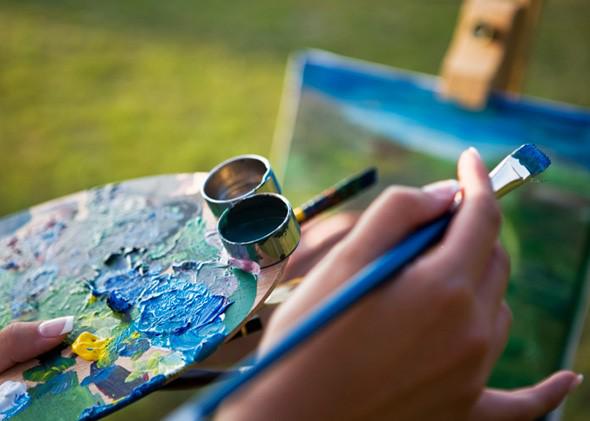From Gaugin’s voyages to the South Pacific, to Paul Klee’s career-changing trip to Tunisia, foreign travel has often played a significant role in the development of artists’ work. But can you actually demonstrate the impact travel has on an artistic career?
University of Hamburg economist Christiane Hellmanzik attempts to measure the effect in a recent paper for the journal Empirical Economics and finds that whether or not travel makes artists better, it at least seems to make them more financially successful. (I’ve written previously on Hellmanzik’s research on art here.)
Looking at a dataset of auction prices for “214 most prominent modern visual artists born between 1850 and 1945”—those with prominent entries in the Oxford Dictionary of Art—she found that “artworks produced in the year of a journey are 7 percent more valuable than paintings produced in periods with no travel.” (Journeys are defined as foreign trips lasting less than 12 months.)
As you might expect, certain countries, during certain periods, were more valuable to the traveling artist. Overall, trips to France had a significant positive effect on art prices—6.8 percent—though the effect was far stronger before 1913. In the post-World War II era, “a visit to France was even a drain on productivity.”
Travel to Germany was extremely beneficial—21 percent—through this was driven mainly by “two sequential strong sub-periods from 1914 to 1938,” coinciding with the Bauhaus era.
And so much for finding inspiration in Florence of Venice. Hellmanzik writes that “Italy never offers positive returns to travel despite being frequently visited.”
Trips undertaken for political reasons had the greatest effect, perhaps indicating that artists’ work improves when they’re freed from government repression or that collectors have a taste for the work of foreign dissidents. Recreational trips were second, and work-related trips had a surprisingly small effect.
Overall, the benefit of travel seems to have faded over time. “When decomposing the travel effect over time, we find significant, positive effects for the first two periods: 1870–1913 and the period of the First World War,” she writes. “There is no travel effect for artworks produced after 1918.” Perhaps as foreign travel became easier and more commonplace, it also became less of a comparitive advantage for the artists who had done it.
Hellmanzik argues that the study has implications beyond the art world, as “the motivations for travel and the benefits of short-term movements for artists seem analogous to those of international business travellers or scientists … short-term movements can be seen as a means of investing in one’s human capital.”
So if you’re feeling like your work is stuck in a rut, a quick trip overseas might be beneficial, or at least it was 100 years ago.
